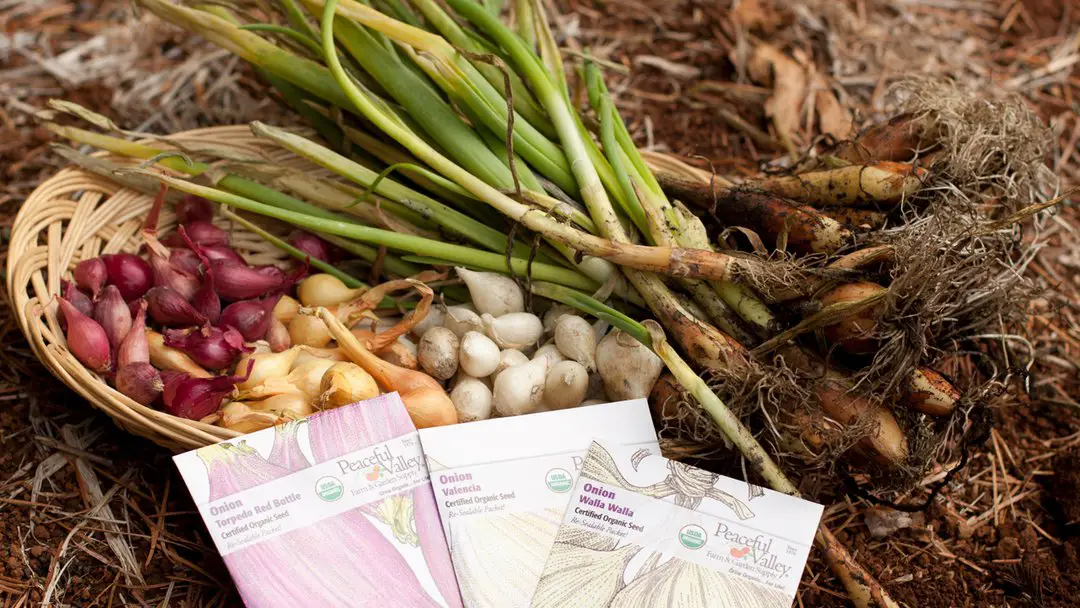
Selecting the proper variety for your growing region is vital to the success of growing an enormous bulb. There are short-day, intermediate-day and long-day varieties and you ought to choose the one for your area. For more information on growing zones, inspect our blog the way to Select the simplest Onions and Leeks.
Soil Preparation
Onions prefer loose, well-drained soils that are high in fertility, slightly acidic (pH between 6.2-6.8), adequately irrigated and full sun. The looser the composition of your soil, the larger your onion bulbs will grow. Prepare your bed by turning under animal manure or compost, ensuring that it’s fully weakened before planting. Compost composed of cedar or redwood isn’t a suitable substitute for top quality compost.
Onions are heavy feeders, so they provide many nitrogen and phosphorus. an honest rule of thumb is to feature one cup of equal parts feed and a bone meal every 10 feet of row.
Planting & Growing Onion Transplants
The potential for fungal diseases like false mildew and the pink root is often greatly reduced by avoiding beds where onions, garlic, and other alliums are grown within the last two years. this point period may be a basic rule of thumb but, generally, “the longer the better”.
As gophers are a serious pest in onion beds, use gopher traps, wire barriers or wire baskets before planting.
planting onion transplants
Onion transplants are often grown within the fall or spring (planting time depends on your growing region). Onion Transplants are often wilted once they arrive, but like other members of the hardy Liliaceae, they’re going to survive for about 2-3 weeks after being pulled from the soil. If you can’t plant them immediately upon receipt, either refrigerate them after soaking the roots in water or mound soil around the roots and keep them moist until planted.
Before planting, trim the tops to approximately 3” and roots to 1/4” – roots will begin to grow rapidly once planted. Plant onion transplants 1 – 2” deep and 4 – 6” apart. Plant close as 3” apart if smaller onions are desired. Rows should be 18 – 24” apart or 12” apart if planting for commercial production.
If planted on raised beds which are approximately 20” wide, transplants should be planted in double-rows 2 – 4” from each edge. “Scatter planting” among vegetables in inter-planted gardens is usually utilized to keep off a spread of pests, but onions must not be forced to face heavy competition from surrounding neighbors.
Apply a layer of mulch like straw, to assist maintain moisture and protect the plants during the winter. Onions are hardy to 20°F, but in cold climate regions, protect your plants with a thicker layer of mulch (at least 2 inches deep).
Onion Sets
onion sets
Onions are easy to grow from sets. confine mind though, onion sets perform the simplest in long-day growing regions. Plant 1” deep and 1-3” apart. Harvest young plants to be used as scallions, thinning to 3-4” spacing. Onions should be mulched and furnished with ample phosphorus while growing.
Mulch deeply (up to 8”) in cold winter areas but only lightly in milder climates. Mulching will suppress weeds, maintain soil moisture and protect bulbs from “heaving” (working their answer of the soil) during heat cycles.
Weed suppression is critical for onions – you’ll grow weeds or onions, but not both. Regular irrigation is important anytime rainfall isn’t sufficient to supply the 1” of water per week required to stay bulbs from splitting in hot dry soil or tasting bitter at harvest. Water up until the time you harvest!
Beds kept weed-free and properly irrigated would require little additional care.
Harvesting & Storing
onions at harvest
Onions are mature and prepared to reap when their tops have yellowed and start to go over. Finish bending the tops horizontal to the bottom by hand or with a rake for people who haven’t completely fallen over. This bending will stop the sap from diverting energy into the leaves while the bulb matures.
Harvest bulbs after the tops have turned brown. Place the tops of 1 row over the bulbs of another to stay them from becoming sunburned. When the outer skins have dried (curing should be between 10-14 days), complete harvesting by clipping the roots, wiping off any remaining soil and cutting the tops back to 1” above the bulb.
Onions keep best when kept separated; individual foil-wrapped specimens can last up to a year under refrigeration. Pungent onion varieties, which have low tide content, will keep longer than sweeter, moister types. Hanging an onion during a mesh bag, in a cool, dry, well-ventilated location and tied off to separate onions from one another, is that the recommended method of preserving onion bulbs for the max time period.
Plant an onion this fall or spring for the enjoyment of a fresh, home-grown onion next summer!
